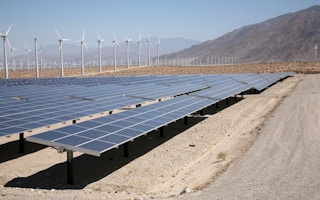It’s been a rough summer for energy markets: Oil prices crashed, China stuttered, the Federal Reserve dithered and emerging market currencies threatened to fall off a cliff. Energy stocks have tumbled down, reaching a crescendo in late August with an 11 per cent decline in the S&P500 stock index.
And as far as the financial markets are concerned, there is little difference between energy sources: The renewables racing horse remains tethered to the oil and gas post. Clean energy stocks have taken a dive, together with the rest.
That’s consistent with tradition: Low oil prices have historically spelled trouble for clean energy. A telling example is the story of the White House solar panels in the 1980s. Installed in 1979, the panels were taken down in 1986 as the oil price reached a decade low. Only in 2010 did President Obama install a new set of panels. A powerful symbol of a broader trend, the White House’s 1986 decision showed that a low oil price forced solar energy to take a back seat.
But this time, tradition will be confined to the annals of history - and the markets will soon understand it. Indeed, clean energy has now permanently de-coupled from the oil markets for at least three reasons.
First, while as much as $200 billion of planned spending on new oil and gas projects has been shelved, clean energy is set for another record-breaking year.
The U.S. solar PV market for example has now surpassed 20 GW and is on pace to grow 24 per cent compared to 2014. This is impressive, considering that 2014 numbers were already five times higher than 2009. The engine behind this growth looks as healthy as ever. The cost of solar panels has dropped from $150 per watt in 1970 to an amazing 60 cents per watt today, and continues to drop.
What this means is that solar now competes with fossil fuels from a cost perspective and will soon be clearly the cheapest option: generating energy from the sun costs $130 per megawatt hour compared to $147 for coal-fired power and $128 for gas. Onshore wind is already at $100.
Contrast this strong performance with that of the US shale industry for example, where cash flow has halved and six in ten oilrigs have been shut down. It also doesn’t look like Big Oil is getting far with its plans to drill the Arctic, bury us in tar sands oil, or frack Western Europe and China. The low oil price will ensure it stays this way.
Second, the markets will soon get that gas, coal-fired and nuclear power plants have been and are killing us.
Large fossil fuel plants are spitting out harmful carbon dioxide and radioactivity, as well as creating large quantities of deadly waste products. Only recently for example have we learned that the shale gas “revolution” was in fact primarily a waste and chemicals one: It turns out that in a typical year, fracking produces 10 times as much wastewater as it does oil and gas - and that’s on top of the fact that fracking has now been proved to conclusively trigger earthquakes.
It is inevitable that the price associated with producing electricity from harmful sources will be incorporated into what we pay for power, via carbon pricing. This will speed up our move to a clean energy system. Four billion people will be covered by a carbon price from 2016, and these regulations will tighten over time because we now know that we no longer have a choice.
Third, the structure of the electricity system is changing away from centralised grids - and the change is accelerating.
For some 80 years, we have relied on a centralised electricity grid powered by massive coal and gas-fired power plants operating, for the most part, 24 hours a day. But this old grid is making way for a more efficient, cheaper and more flexible 21st century system powered by clean energy in a combination with energy storage and responsive demand software. That’s what the smart money is investing in.
In Germany for example, the number of solar power storage installations is up 35 per cent in a year because of both cheaper prices and people’s desire to reduce their reliance on faceless and consumer-unfriendly utilities. A smarter electricity system means we already need less large coal and gas fired power plants, and eventually we won’t need any.
No one is considering taking solar panels down at the White House anymore. Why would they?
This post was originally published on The Huffington Post and is republished with permission.


















